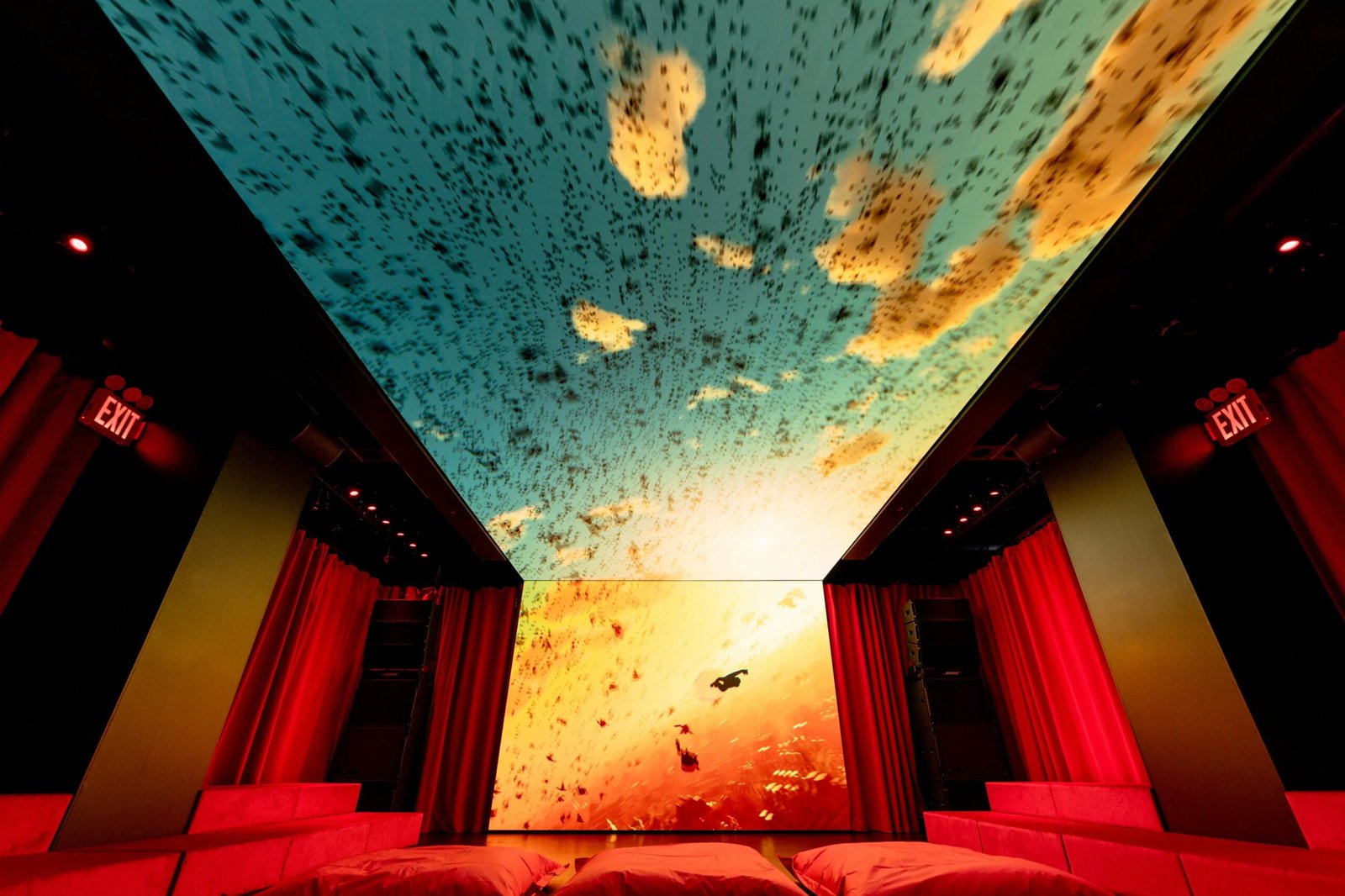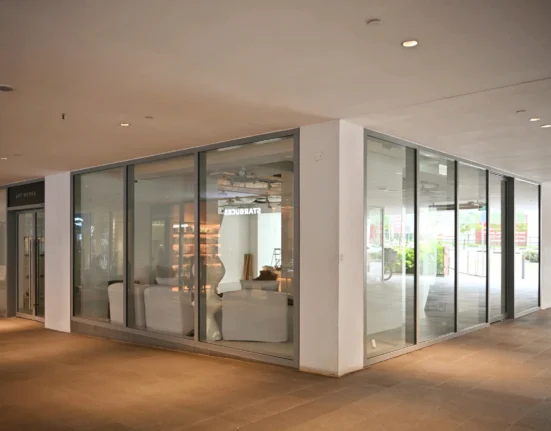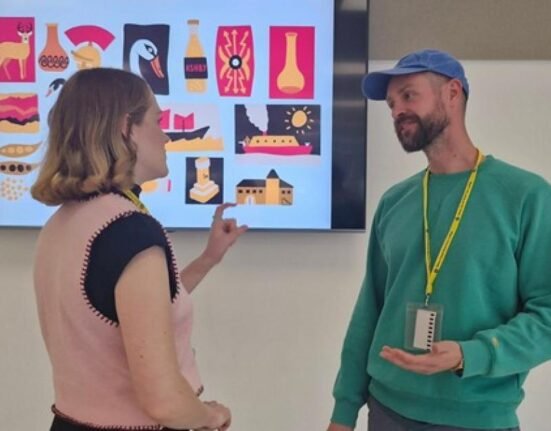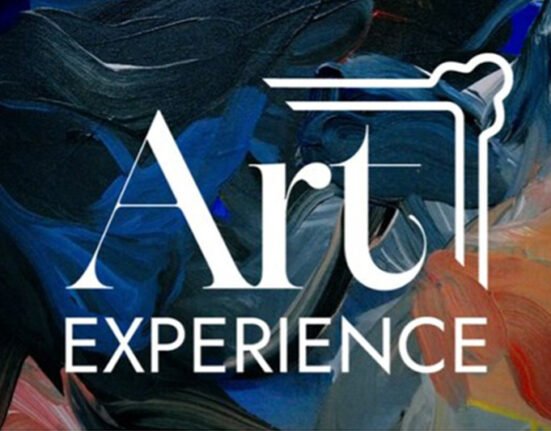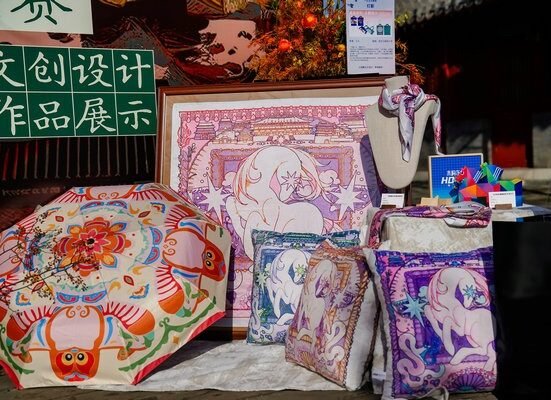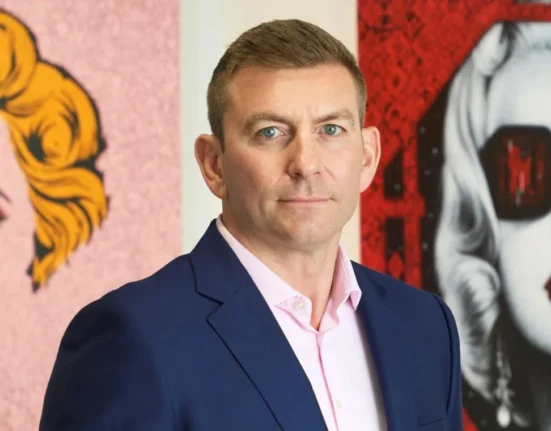
While immersive digital art is most often associated with bland tech-forward entertainment, there are digital creators and collectives who are trying to do it differently by using technology and new media to create complex experiences that enhance bodily, sensory and relational awareness to counteract the desensitization that characterizes contemporary society.
For at least two decades, the Korean interdisciplinary collective design and art company d’strict has been creating innovative spatial experiences by developing content through digital media technology. Founded in 2004 in Seoul as a web design company, the now international studio has both mesmerized and imaginatively engaged global audiences with groundbreaking projects such as “LIVE PARK” (2011), the world’s first indoor 4D art park; “WAVE” (2020); “Waterfall-NYC” (2021); and Whale #2 (2021), a series of public media art projects. Having won 99 international design awards—including 26 iF Design Awards and 13 Red Dot Awards—d’strict is ranked No. 1 in Asia’s Design & Architecture Studio category by the official iF Design Award ranking. Its most ambitious project to date, “Arte Museum” (2020-present), has grown into a network of more than 19 venues across Korea, Asia and, most recently, the United States, opening in New York this September following its debut in Las Vegas.
On October 1, d’strict unveiled its first New York presentation of the traveling exhibition “reSOUND” at HERO, an immersive arts and culture space in Rockefeller Center’s rink level. After experiencing the opening night’s captivating multisensory journey through the studio’s expansive multimedia environments, Observer spoke with L.J. Kim, d’strict’s director, to learn more about the company’s distinctive approach and how it has managed to stand out at the increasingly crowded intersection of art and technology.


Driving d’strict’s trajectory has been a relentless exploration of how technology can reframe and expand everyday perception, Kim says. At the core of the company’s vision lies an emphasis on collaboration, transmediality and audience interaction.
While “Arte Museum” was developed primarily by in-house creators as an immersive art extension—something visually spectacular that draws viewers deeply into its setting—”reSOUND” takes a more multisensory, collaboration-based approach. “It engages different senses and emotions, exploring the intersection of media, art, technology and daily life,” Kim explains. “The aim is to make the experience more approachable and participatory rather than distant or institutional.”
As part of d’strict’s art initiatives, “reSOUND” intentionally avoids relying on any single institution or venue. Conceived as independent, nomadic and flexible, it is designed to adapt to different locations and foster collaboration with a wide range of creatives. On view in New York for a year, the plan is for the exhibition to travel to other U.S. cities.


Kim, who has been with the company since its founding, brings to her role a precise understanding of museum standards in exhibition-making, curation and audience engagement. “We actually started back in 2000 as a web design agency—a pioneering move at a time when most people didn’t even have laptops or smartphones yet,” she recalls. “From the beginning, our focus was on users and how people interact with technology.” What has always driven d’strict is the creative impulse to produce projects that reflect its own ideas and concepts, and those projects began taking shape early on.
In 2011, well before the proliferation of tech-centered art experiences and festivals, d’strict launched “LIVE PARK,” a project that became a key starting point for its current approach to technology and audience engagement. Described as the world’s first indoor 4D digital theme park, it combined a wide range of technologies—RFID tags that allowed visitors to create their own avatars and explore the space interactively, 3D cameras, AR and hologram systems and even robots. “It was an early version of what we now call a ‘B2C experience model,’ focused on direct engagement with visitors,” Kim explains. Structured into eight zones over 10,000 square meters with 13 adventure modules and three mixed-reality performances, “LIVE PARK” aimed to synthesize art, gaming and immersive experience into a unified story world for audiences to inhabit. Launched around 2020, the “Arte Museum” project built on that model and quickly became one of the company’s core ventures.


From the beginning, what distinguished d’strict’s model from others was its embrace of multiple technologies to create a multisensory experience that transcends the screen or projection. That’s why, when describing their work, Kim prefers to use the term “media art” rather than “digital art.”
Having studied media arts around 2004, when the field was still relatively new, Kim knows well how this genre has long struggled to fit within the established structures of the traditional art world. “For me, it’s always been a challenge to find a clear position for media art within institutional contexts,” she reflects, noting how even later, while working as a curator at a contemporary art museum, it was difficult to introduce digital, immersive or media art projects. “There was a general fear of technology within museums. I remember some of my colleagues saying that even if we were to donate media art to a national museum, the institution wouldn’t want it. They simply didn’t know how to handle or preserve it.”
A decade later, things are beginning to change. Media and digital art are becoming more visible and respected in institutional contexts, as technology and digital experience increasingly intertwine with daily life.
Yet during the opening, when we asked about the difference between digital and immersive art (which has now become its most popular form), Kim explained that she tends to resist drawing distinct boundaries. “They overlap to such an extent that separating them often feels arbitrary.” Still, the question stayed with her that night, after meeting with around 150 visitors who, for the first time, experienced what they had envisioned as a multimedia immersive encounter for New York.
A synesthetic immersion
The relationship between digital and immersive art, Kim later reflected, may resemble the relationship between film and cinema. “Film, as technology, came first; cinema built on it to create a collective experience—a space, a rhythm, a way for people to share moving images together,” she says. “Likewise, digital art provides the tools and methods, while immersive art expands them into shared environments and emotional, sensorial contexts.”


Earlier that day, three senior visitors told Kim how much they enjoyed “reSOUND,” calling it “digital and innovative.” She found that response fascinating—not just because they acknowledged the medium, but because their enjoyment came from experiencing it together in a physical space. “It’s similar to the wonder early cinema audiences must have felt when moving images first appeared on a screen—the sense of something new unfolding in front of everyone within a shared context.”
For Kim, immersive art functions as a platform that extends digital art into a more public and collective experience, emphasizing presence, emotion and participation. It invites audiences not only to observe but to engage with their surroundings and with one another by entering the artwork together. “Technology is only a starting point; the immersive form allows for a deeper, shared encounter,” Kim emphasizes.
In fact, “reSOUND” in New York unfolds as a cinematic yet deeply synesthetic journey designed to prompt personal discovery and heighten awareness of beauty’s fragility—an exploration of the fleeting nature of multimedia experience and its reflection on our daily encounters with technology and perception. Each participating artist—Children of the Light, Fillip Studios, Eric Gunther, Liam Lee, JUMBO and Hannah Bigeleisen—reimagines the exhibition space as a distinct sensory and psychological environment, evoking emotional and physical responses that merge art, sound and interaction.
The exhibition opens with Arrival, featuring OCEAN by d’strict, a large-scale panoramic video installation created with composer Jang Young-gyu. The work transforms the gallery into a dark, immersive wave that surrounds visitors with sound and motion, setting a tone of sensory and imaginative depth for the journey ahead. In Transito, the collective Children of the Light constructs a portal of radiance—a corridor of shifting luminous columns accompanied by a glass harmonica score—that dissolves spatial perception into a fluid, infinite field of light. Boundless then expands these sensory and cognitive possibilities with Tactile Orchestra by Fillip Studios, which turns the walls into instruments, encouraging visitors to compose harmonies through touch, while Boundless Body by Eric Gunther translates poetry into vibration along a twelve-foot wooden bench. Nearby, Liam Lee’s Breathing Room transforms a mirrored infinity chamber into an undulating, living landscape of reflection and form.
The following chapter, Echo, immerses audiences in an omnidimensional environment inspired by the sounds of black holes—where light and darkness, void and sculptural mass, merge into synesthetic harmony. Conceived through a collaboration among d’strict, astrophysicist Erin Kara, anthropologist Ian Condry, Kyle Keane of the University of Bristol, the media collective oOps.50656 and KKOL Studio, the installation fuses scientific sonification with kinetic light and spatial sound, recalling the visionary experiments of Lucio Fontana’s Ambienti and Piero Manzoni, who were among the first to create environments transcending conventional notions of materiality and space.
In Whisper, Hannah Bigeleisen’s Petal Collection evokes emotion through material transformation, softening cement through rhythmic repetition, while JUMBO’s Fortune Chairs invite playful interaction with sculptural seats shaped as smiles. The exhibition concludes with Flow, which includes a meditative video reinterpretation of art history through movement and A.I., exploring the relationship between individuals and an ever-changing social and urban environment. A site-specific sculptural LED installation extends this reflection, choreographing light in an electric dance that follows a 5.1-channel score by Tristan Barton.


“Arte Museum” is an accessible experience for all audiences
Visiting the “Arte Museum” a few days later revealed a similar approach, centered on delivering a multisensory experience—though here there is an even clearer emphasis on accessibility for visitors of all ages and backgrounds. When Observer reached out to d’strict CEO Sean Lee, he emphasized that in both “Arte Museum” and “reSOUND,” immersive experience goes beyond passive spectatorship. “It’s about participation: stepping into the soundscape, sipping a cup inspired by the artwork, breathing in a bespoke scent and becoming an active part of the art at every stage of the journey,” he explained. “To us, immersive art means engaging all the senses in an innovative way to create an indelible experience that fully surrounds and involves the audience.”
Lee acknowledged that “Arte Museum” was intentionally designed for anyone seeking a new, emotionally resonant way to experience art—from families and tourists to art lovers and creatives. “The exhibition invites visitors of all ages and levels of familiarity with art to step into immersive digital landscapes where the power of nature comes alive through light, sound and movement,” he said. Since the grand opening in September, the response has been overwhelmingly positive; guests have called it “truly one-of-a-kind—a must-visit” and “a unique local gem.”
“Arte Museum,” according to Lee, was born from the belief that art should be something you can grasp and feel the moment you encounter it. “We want the experience at ‘Arte Museum’ to feel intuitive, inviting immersion not only physically but also emotionally,” he said. “Our works are created to speak directly to the senses, allowing emotion to precede interpretation without requiring prior knowledge or intellectual prerequisites.” According to Lee, that is one of the key distinctions between d’strict’s approach and other ventures in digital or immersive art.
“Many visitors have said they were surprised by how moving the experience felt—not just visually, but emotionally—which is exactly what we hoped to achieve by blending digital art, sound and scent into a journey through nature,” Lee added.
“Arte Museum” in New York is d’strict’s ninth edition and the second in the U.S. after Las Vegas. Yet wherever “Arte Museum” goes, it seeks to create a dialogue with the city, reflecting through the digital medium what makes it beautiful. “While select signature works travel with us, each edition also features a site-specific installation that pays tribute to the local landscape, history and character that shape its identity,” Lee explains.
In Gangneung, “Arte Museum” reimagined the mountain ridges that form Korea’s spine, illuminated by hundreds of floating lanterns. In Dubai, it captured the desert’s transformation into a modern metropolis. In New York, it celebrates the city’s vibrant skyline, its legacy as a port and its enduring influence on contemporary art, Lee explains. “We don’t just bring art to a city; we seek to be of the city itself.”


Technology as a tool of enhanced relational awareness
As Kim notes during our interview, in this “reSOUND,” as in all projects by d’strict, the focus is no longer on technology itself but on how people experience interactivity. “It’s not about pressing buttons or triggering digital effects,” she clarifies, pointing to Liam Lee’s installation as an example—“it’s not interactive in a technical sense, but it’s still deeply interactive in how it engages your senses. Interactivity now feels broader to me—it’s about touch, sound, emotion and perception, not just screens or devices.”
This is why sound is such a central component for d’strict. To Kim, it is often the first sense that comes to mind when she thinks about multisensory art, especially in the context of new media and immersive environments. Unlike images, which we must turn toward or consciously observe, sound surrounds us, she notes. By its nature, it is immersive, spatial and enveloping, shaping how we physically and emotionally inhabit a space. “Sound doesn’t yet carry the same connotations of manipulation as images. A familiar tone, voice or just the sound of a breeze can instantly evoke memories.”
For this evocative capacity of sound beyond any codification, in “reSOUND,” the sonic dimension isn’t like the music one listens to daily, nor is it merely a backdrop as in films. In “reSOUND,” the quality, texture and direction of sound are crucial, Kim explains. “Sound is not a backdrop; it is a medium that structures space and guides perception. It sets the emotional tone and even influences how people connect with each other inside the exhibition space.”
That is why, in “reSOUND,” they paid such close attention to detail—quality, clarity, volume and directionality. It is not only what is heard but how it moves and is felt through the body. At Rockefeller Center, visitors are invited to feel rather than analyze the sound component—to instinctively react and surrender to what it evokes. “You don’t need to explain it and I think that’s part of its beauty,” Kim states, noting how well-designed sound can turn a room into a landscape, time into rhythm and alter how we feel about the art and about ourselves within a shared setting. “Sound is one of the most direct paths to collective immersion. Participants often respond viscerally to subtle sonic cues and at times this produces a quiet synchronization among listeners,” she adds. “A shift in sound, a vibration, a resonance or a distant echo can change not just our perception of the artwork but our awareness of the space and of others nearby.”


Sound in “reSOUND” functions as both an entry point and a connective material in multisensory art, Kim acknowledges. It invites audiences not just to listen but to feel, to move and to be present in ways that can be more immediate and communal than visual art alone.
Ultimately, what d’strict strives for is to experiment across a wide range of senses without being confined by a single technology or image. It is for this reason that, as Kim reflects, genuine immersive art often resists traditional categories, as it challenges how we think about experiencing art in conventional gallery and museum settings, including how much we need to know before simply encountering it. In doing so, audience study and understanding become essential. “A big part of our work is storytelling—understanding who the audience is, what kind of visitors we have and how they connect to the experience. That’s really what we’re focusing on now.”
“We live in a time when digital technology saturates nearly every aspect of life, connecting us while often leaving us paradoxically more isolated and passive,” Kim reflects. “The intention with ‘reSOUND’ was never just to present technology as spectacle, but rather to create situations that help us rediscover a deeper sense of presence with ourselves and with others.”
Technology, in other words, becomes a means to heighten and expand our sensory capacities—and with them, our imagination—beyond physical boundaries and even the linguistic limits of signification. Within these immersive environments, the body is not a passive viewer or receiver but an active participant in a process of co-creation and meaning-making. “That’s one of the most interesting things about this exhibition for me: the experience is direct and physical and it doesn’t require explanation,” she notes. It simply requires presence—a full awareness of one’s own act of perceiving and experiencing.


“One of the greatest potentials of immersive art is its ability to reframe perception,” Kim reflects toward the end of our conversation. In a digital exhibition, people share space and time without constant narration or explanation. There is room for genuine experience, surprise and reflection. In those moments, technology does not separate us; it becomes a platform for shared, embodied awareness. “My hope is to use technology not as a distraction but as an invitation, bringing audiences back into direct relationship with their surroundings and with one another,” Kim adds. “Visitors often leave ‘reSOUND’ encountering the world a little differently, noticing their surroundings, sensing others’ presence and feeling more grounded in the moment.”
Echoing Kim, a few days later d’strict CEO Sean Lee told Observer that the hope is for every visitor to leave the “Arte Museum,” “reSOUND” and all their spaces feeling inspired and restored—with a renewed appreciation for the power of the natural world. “Whether it’s the crashing waves, the pouring digital waterfall, the roaring of a mythical creature or the beauty of New York City’s culture and history, we hope that the wonder of nature and culture sparks joy and brings comfort,” he said. “We also hope that the inspiration stays with them long after their visit, reminding them to feel closer to nature, art and all the beauty around them.”



